Activism Matters: Vans Steps Up for Black Artists


The iconic brand Vans has carved out a unique place in fashion history by supporting the cultural profile of skaters, rockers and others who might otherwise go unnoticed. In the process, though, racial representation has been neglected. Now, in the wake of the Black Lives Matter protests of 2020, the company is making a new effort to reach out and do its part raise the voices of Black artists and professionals.
Making a wider space for racial representation
Since its beginnings in 1966, Vans has been associated with a side of youth culture and creative expression that is dominated by white males. The company’s connection with skateboarding and BMX is legendary, and its sponsorship of the long running Warped Tour has earned it a place in the Rock and Roll Hall of Fame. These fields are not exclusionary, but the overall effect has been to wash diversity into the backwaters of cultural phenomena.
One sign of turnabout occurred in 2018, when Vans joined up with A Tribe Called Quest and Sony Music’s The Thread Shop to celebrate hip-hop culture.
That is quite a contrast to 2007, when diversity was an afterthought among the 14 artists Vans recruited to produce a line of sneakers featuring characters from The Simpsons. Similarly, a joint venture with the Museum of Modern Art in New York City yielded little in the way of exposure for Black artists.
The Black Lives Matter effect
The Black Lives Matter movement seems to have jolted Vans into action, and focus more specifically on Black voices.
Black Lives Matter predates the protests of 2020, having been formed by three women in the aftermath of the 2013 murder of unarmed teenager Trayvon Martin by a self-appointed white neighborhood watcher. The movement experienced a powerful rebirth of energy last summer following the murder of another unarmed Black man, George Floyd, by a white police officer. Unlike the Martin case, the minutes-long, tortured killing of Floyd was captured on film by a Black bystander and circulated on social media for all to see.
In the months that followed, public outrage swelled over racial injustice and many corporate leaders took a long look at their diversity programs, and Vans was among them.
On May 31, just days after the Floyd murder, Vans’ Global Brand President Doug Palladini posted a public statement in which he highlighted a pattern of empty promises on racial justice in the U.S., and pledged that Vans would seek a path toward permanent change.
“For Vans, this is where we draw the line. This is where we promise to never forget, to never stop living our values of inclusion and being open to anyone. This is where we take action and keep acting for as long as it takes,” Palladini wrote.
That pledge took concrete shape last fall, when Vans detailed new diversity targets on its website under the title “Empower.” In doing so, the company has set a standard for others to follow. Rather than simply outlining a new diversity policy and giving itself a round of applause, Vans begins with a self-critical assessment, and positions itself as company that has the power to make a difference by transforming itself.
“We acknowledge that we have not been a strong ally nor spoken up on topics of racial and social justice. The unrelenting violence and racial profiling impacting the Black community is evidence that our society is only at the beginning of change. Going forward, we commit to take action that always supports equity and justice for marginalized communities,” Vans writes.
Toward racial justice, one Vans step at a time
As part of Vans’s self-critical assessment, the Empower page is illustrated with several charts that demonstrate how far the company has to go.
“Our store associates often reflect the communities in which they are based and are as diverse as the consumers we serve. We cannot say the same for our corporate office. We know we have work to do to improve the diversity in our corporate office and are committed to doing so,” Vans explains.
Among the steps Vans has pledged, one key element is to double BIPOC (Black, Indigenous and people of color) representation at the brand’s headquarters. That also involves expanding its work with Historically Black Colleges and Universities (HBCUs), and other organizations and businesses dedicated to cultivating diverse talent, including The One Club and the Black-owned design firm PENSOLE.
The new policy also establishes a platform for employees to discuss, learn, and lead on dismantling institutional racism, and it sets goals for increasing BIPOC representation in Vans’ creative and promotional ventures, including its artists and brand ambassadors. That also involves an additional layer of effort in cultivating more BIPOC participation in the action sports promoted by Vans.
“Saying nothing implies acceptance, and the Vans Family cannot accept the status quo any longer…Vans alone cannot cure what ails this world, but we will not sit idly by and watch it race to the bottom,” the company concludes.
More Black voices for Black History Month
Vans’ renewed efforts already appear to be having an impact on its public profile. In February 2020 the company celebrated Black History Month with custom designs by four Black artists, an effort that resulted in relatively little media attention for the artists themselves.
This year the spotlight has turned up. Among other media notices, Vans' 2021 Black History Month venture took the number 3 slot in Elle magazine’s list of “Hottest Designer Drops of February 2021.” The publication chose a photo of Vans 2021 artist Rewina Beshue for the lead illustration, making Vans the only company on the list to be personally represented by Black talent.
Along with California-based Beshue, the 2021 Black History Month artists are Chris Martin, Sydney G. James and Tony Whlgn.
In addition to showcasing the artists’ work, the Vans website provides a platform for each artist to articulate their purpose and vision.
As the featured artist this week, Martins discussed the impact of racism on the Black experience in America.
“My Blackness is completely inseparable from all aspects of my life. The ideology and bigotry of American history shaped the consciousness of all souls inhabiting Black bodies. Through my work I’m able to hold a mirror to this dark experience and share perspective, inform, and gain the attention of anyone willing to take part in the uneasy American truth,” he wrote.
Martins’ message is also one about the power of activism.
“I'm focused on what I'm willing to give rather than what I would like for others to take away -- like telling a story of how we stood up seven times to continue fighting instead of the six times being knocked down, flipping the negatives into positives, showing off our scars as a sign of strength rather than focusing on the pain endured. It's the same story, just a different mindset - triumph instead of turmoil,” he wrote.
With the explosive rage of white supremacy on full display during the failed insurrection of January 6, it is all the more important for companies to follow Vans’ lead to take Martins’ message to heart, and step up to fight for equality and justice.
Be sure to sign up for our weekly Brands Taking Stands newsletter, delivered to your inbox each Friday.
Image credit: Vans e-commerce site
Not Feeling the Corporate Love for Black History Month
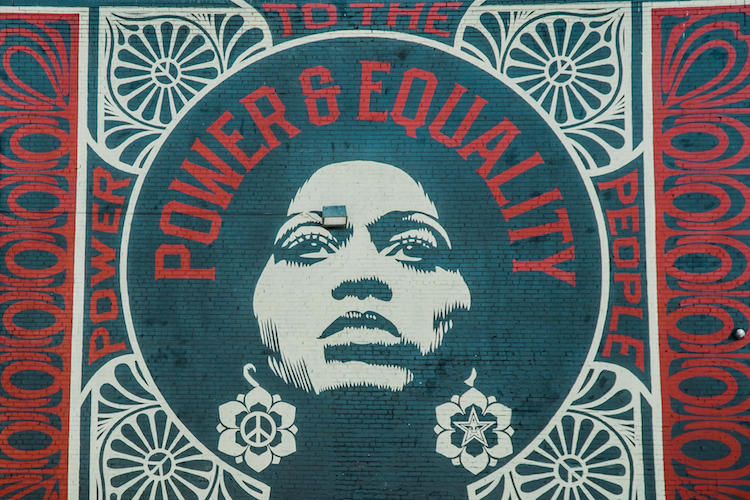
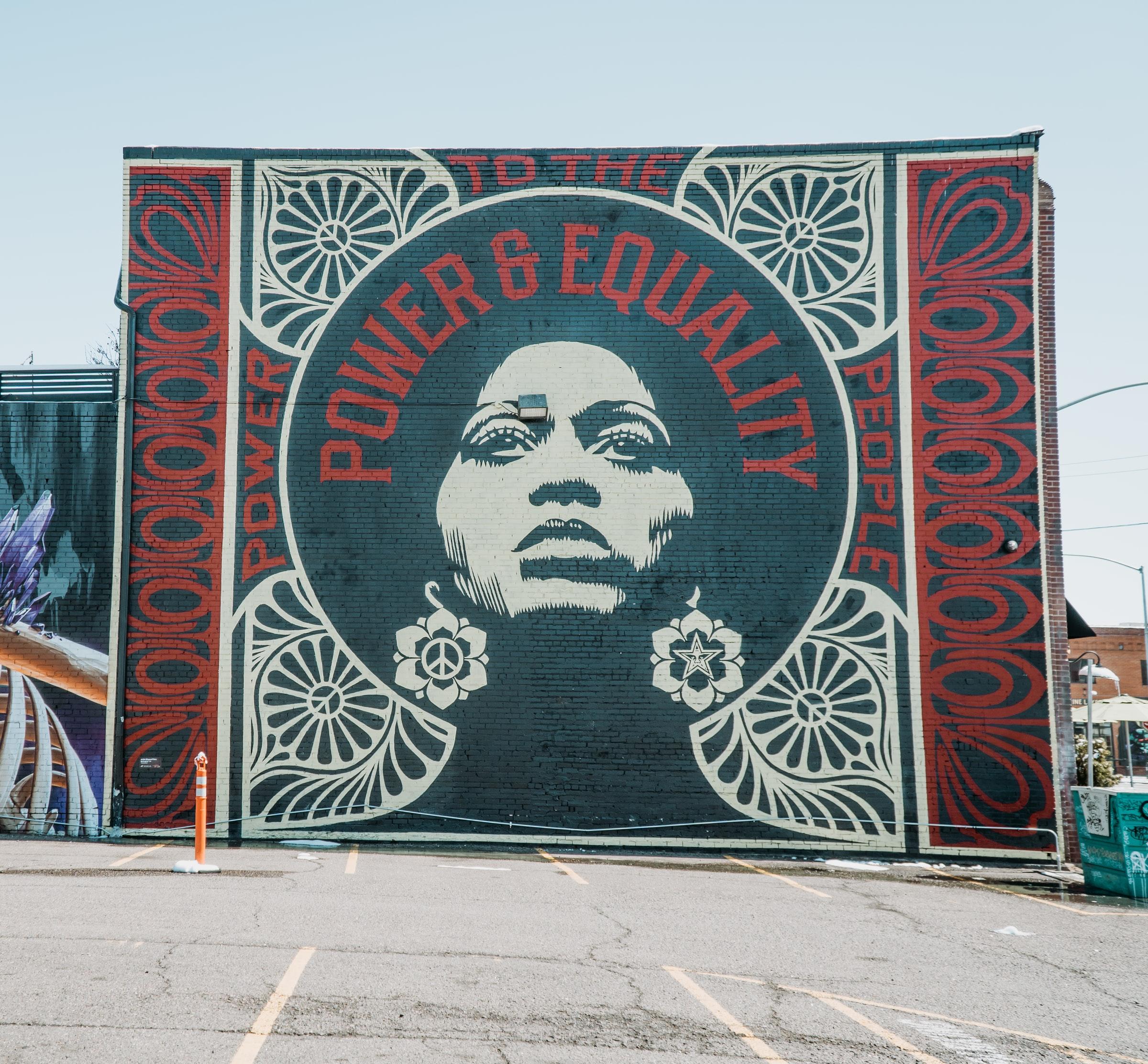
We know Black History Month is supposed to be a time for renewed focus on the achievements and contributions of America’s Black community. But similar to how many in the LGBTQ community feel about Pride Month in June, this time is marked by more cringing than celebration for many people.
To their credit, some companies are trying to do the right thing, starting to take a hard look at their hiring practices and launching plans to do right for the Black community as well as for all people of color — and many of these programs started well before Black History Month.
But the actions of many corporate executives, and the communications professionals who support them, result in gestures during this month that evoke more face-palms than honest conversations.
“Right now, Black History Month is more about corporations telling us how they appreciate Black culture instead of showing us,” Earnest Owens recently wrote for the Washington Post. “Reparations, reallocation of resources, and honest and transparent reassessments of current racist power structures are more desirable than copy-and-paste greetings sent by Siri.”
For example, we see this ongoing disconnect in the retail sector. There’s no shortage of data confirming that more vulnerable communities across the U.S. are already being underserved during the nationwide vaccine rollout. But many retailers, which overall hire people of color in vast numbers, aren’t doing much to protect their workers.
The public statements many companies are issuing this month also don’t match the reality in the C-suite. Since 1955 there have been only 19 Black CEOs of Fortune 500 companies, or barely 1 percent; pretty soon, there will only be three. As for Black women executives, Ellen McGirt of Fortune sums it up, noting that they “tend to get shunted away from positions of real impact and end up in career cul-de-sacs that eliminate them from consideration.”
This problem festers in many a boardroom, too. the marketing messages that bombarded us over the past summer in the end generally obfuscated the fact that months later, little has changed in corporate America. To Mark Ritson, a brand consultant and former marketing professor, the answer to this challenge lies within. “If you care about black lives, you don’t get inspired by an Instagram post,” he wrote last summer. “You get inspired by Black faces in the boardroom. Companies need to become the change they are tweeting about. Walk the walk before you tweet the tweet. Though that second step really isn’t necessary.”
Be sure to sign up for our weekly Brands Taking Stands newsletter, delivered to your inbox each Friday.
Image credit: Shelby Ireland/Unsplash
The New Bolt EUV: A Step Toward Affordability, Diversity and Rapid EV Adoption


Here’s the conundrum that GM seeks to solve with the newly unveiled Chevy Bolt EUV. U.S. drivers have largely failed to warm up to the electric vehicle (EV) revolution so far, and part of the problem lies in both affordability and diversity.
Electric vehicles cost more up front than comparable cars, a situation that favors affluent car buyers over a broader, more diverse swath of the driving public. Exacerbating the problem is the growing consumer preference for SUVs over sedans, which incentivizes auto makers to focus on luxury models. As the nation races to decarbonize its transportation sector, there is potential for EVs such as the Bolt EUV to lead the way.
Zeroing in on affordability and diversity
EVs first began trickling into the mainstream market about 10 years ago, and auto industry observers quickly spotted a demographic trend that continues to persist: EV owners tend to be older, more affluent and white.
In the U.S., one influential factor is Tesla’s position as an electric vehicle frontrunner, with the bulk of its sales in California, where incomes are generally higher. Tesla launched on a business model that involved promoting luxury electric vehicles as a precursor to manufacturing more affordable cars, and as of last year the company’s hold on the all-electric vehicle market in the U.S. stood at an impressive 80 percent.
That may change as other car makers get up to speed, but in the meantime the demographics of Tesla ownership bring up some concerning issues in terms of diversity and inclusion.
Though the age factor depends on which Tesla model is analyzed, Cox Automotive took a close look at the numbers in 2019 and came up with this observation:
“…the average Tesla buyer represents a small, narrow demographic in our society: rich, young males working in tech-related industries.”
Home ownership is another key variable, because it affects the availability of convenient EV charging opportunities.
In 2019, Hedges & Company noted that the California factor skews Tesla statistics for home ownership somewhat, because more Tesla owners in California tend to be renters due to higher housing costs. Overall, however, the connection between higher incomes and electric vehicle ownership correlate to home ownership, an issue that is rife with racially charged issues in the U.S.
Just over a year ago, The American Prospect followed up on the home ownership issue and drew a comparison between the transition to electric vehicles with other far-reaching forms of racial and economic exclusion such as redlining.
“This transition already risks leaving low- and moderate-income people behind at a time when the country should be accelerating this shift to meet the ambitious net-zero emissions goals needed to save a habitable planet,” Gabrielle Gurley wrote.
The SUV sustainability conundrum
In addition to addressing historical issues of race and affordability, automakers that seek to tap into the SUV end of the electric vehicle market also need to consider sustainability issues.
All else being equal, more resources of all kinds get poured into manufacturing, driving, and maintaining an SUV, regardless of whether it runs on fossil fuels or electricity.
Because battery range is affected by a vehicle’s size and weight, the shift in consumer taste to SUVs also throws another element of stress into the formidable challenge of upgrading the nation’s electricity infrastructure to enable rapid, reliable battery charging for millions of electric vehicles.
The growing preference for SUVs is especially challenging for electric vehicle manufacturers that seek to attract low- and middle-income car buyers. Electric vehicles cost more up front than comparable gas-powered cars, mainly due to the cost of the battery. In order to attract new EV buyers, auto makers like Tesla have been concentrating their efforts on the luxury end of the market, where consumers are willing to pay more up front when they see enough bells and whistles added on.
The new Bolt EUV electric vehicle: smaller is better
That’s why GM’s decision to produce a more affordable, smaller-sized SUV is significant from a sustainability perspective as well as an inclusion and access perspective. At just 6 inches longer than GM’s Bolt sedan, the new Bolt EUV mitigates some of the sustainability problems raised by populating the streets with larger vehicles.
To be clear, GM is not placing all its money on smaller, more affordable SUVs. The company kicked off 2021 with a splashy Super Bowl ad featuring two much larger - and much more expensive - electric vehicles, the Cadillac LYRIQ SUV and GMC HUMMER super truck.
Nevertheless, the new Bolt EUV demonstrates that the company is serious about pursuing the affordable end of the SUV market, with a close focus on driving EV battery costs down.
To that end, GM has been careful to design a smaller SUV that leverages the name recognition of the popular Bolt EV sedan while providing drivers with a clearly identifiable SUV experience.
“The new Bolt EUV is the best of the Bolt EV packaged in an SUV-like vehicle with more technology and features, giving customers more choices and reasons to switch to electric,” explained Chevrolet VP Steve Hill. “This is an opportunity for Chevy to capitalize on the success we’ve built with the Bolt EV and bring new customers into the Chevy family.”
EV charging and EV access
As for inclusion, one key reference is a white paper published in 2018 by the American Association of Black Engineers titled, “Charging ahead with Vehicle Electrification.” The paper details a complicated network of technology, grid reliability, diversity and affordability issues in relation to EV charging access.
In addition, the AABE white paper affirms the key role that clean power will play in environmental justice as demands on the electricity grid increase.
GM appears to have assimilated those points with the Bolt EUV, partly by including a charging cord with the standard package that covers both Level 1 and basic Level 2 charging.
Level 1 charging takes much longer, but it simply involves plugging the vehicle into any three-prong household outlet. That makes it accessible to practically anyone who owns or rents a home, but it leaves out many others who live in multi-family buildings. Such charging also excludes those who have no driveway adjacent to their home. The Level 2 option is an inclusive feature that enables Bolt EUV buyers to plug in at any public charging station.
Level 2 stations provide a faster charge, and to further incentivize electric vehicle ownership among home owners, GM is also offering to cover the cost of installing a Level 2 charging station at home, in collaboration with the firm Qmerit.
GM’s focus on electric vehicle sales to ride-hailing drivers also dovetails with the AABE white paper. Last fall GM began offering Uber drivers a discount on Bolt EVs and charging accessories, and it recently partnered with RMI to explore the potential for transportation network companies to incentivize the expansion of public charging stations into more neighborhoods.
GM has already partnered with the firm EVgo to install 2,700 public charging stations nationwide, and the ride hailing connection could build on that partnership.
GM has also embarked on a series of renewable energy ventures as a founding member of the influential Renewable Energy Buyers Alliance, helping to ensure that the electric vehicle market can continue to accelerate without imposing new burdens on underserved communities related to power generation.
Diversity from the ground up
If the new Bolt EUV proves to be the Model T of the 21st century, much of the credit will be due to the long evolution of diversity at GM.
GM CEO and Chairman Mary T. Barra first started with the company as a co-op student in 1980 through the General Motors Institute (Kettering University) at the company’s Pontiac Motor Division.
GM’s EVP of Global Manufacturing, Gerald Johnson, also started with GM as a Kettering co-op student at age 18. He is now the recipient of the 2021 Black Engineer of the Year Award for his leadership during the pandemic and for his commitment to mentoring, diversity, equity and inclusion.
“Gerald’s passion for the business, strong leadership skills, and extensive manufacturing and labor experience will help in our efforts to continue to transform the company, supporting both the core business and future of mobility,” Barra said in her official remarks for the award ceremony.
Look for diversity and inclusion to feature prominently as GM grapples for the pole position in the mass electric vehicle market over the coming years.
Image credits: Chevrolet
FERC Finally Empowers Environmental Justice Advocates and Public Health Experts
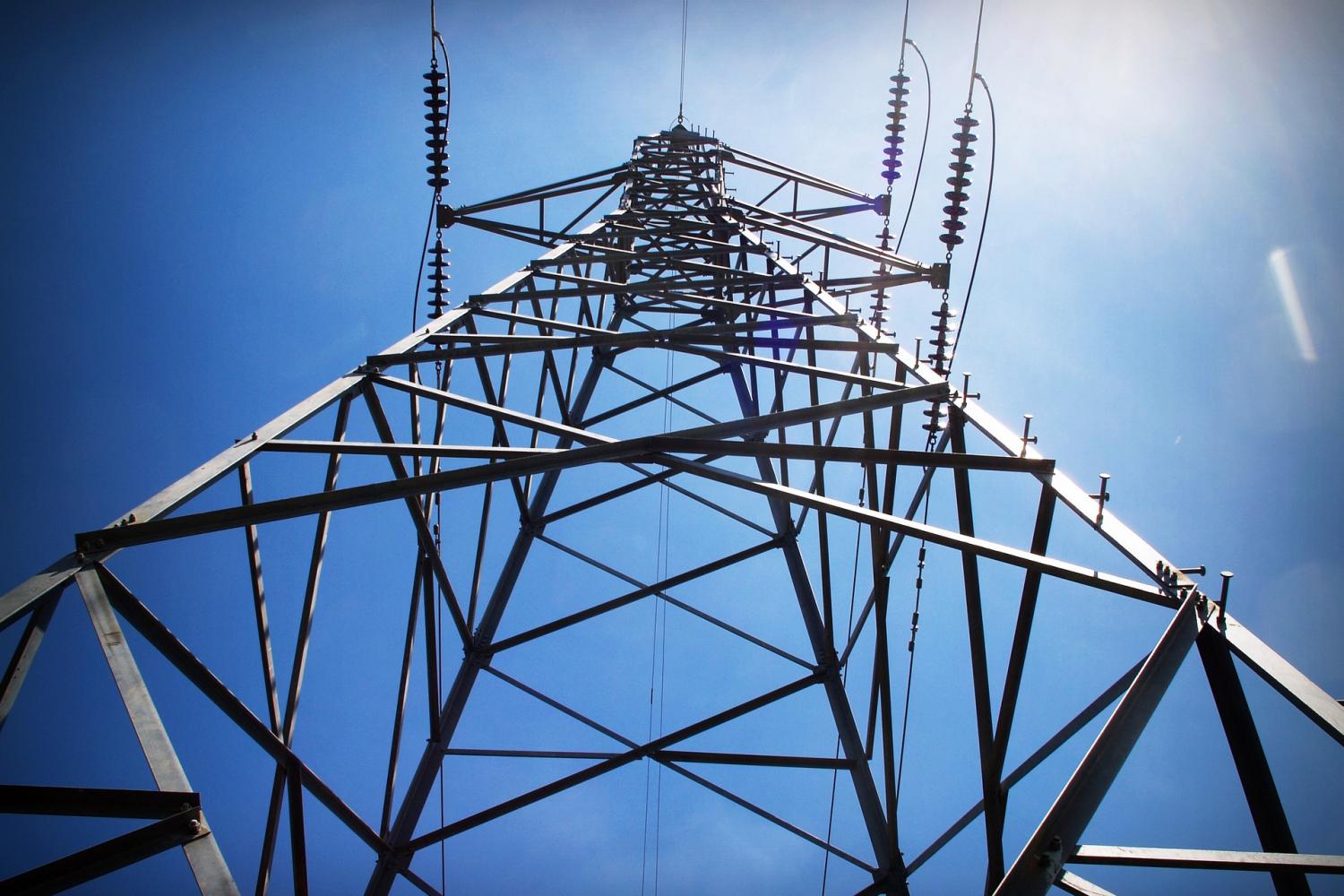
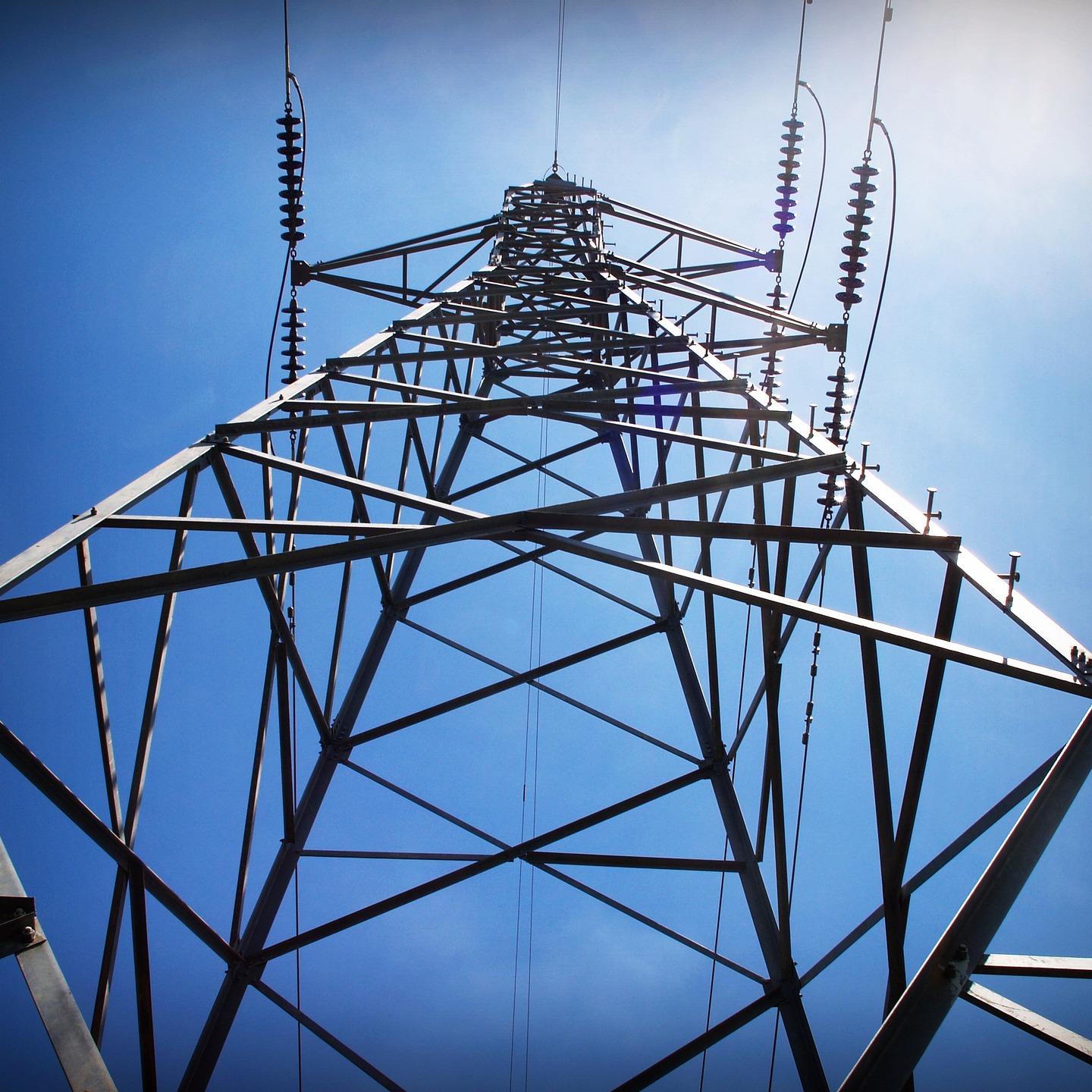
FERC (the Federal Energy Regulatory Agency) wields tremendous power in the environmental justice area, due to its leading role in approving interstate pipelines and transmission lines for gas, oil, and electricity. All too often that power has been shunted aside, but the agency finally appears ready to flex its justice muscles at the onset of the Biden administration.
FERC asleep at the wheel on environmental justice
Because FERC has an interstate mission, its direct impact on energy infrastructure is limited. For example, FERC does not regulate coal mines or other local energy infrastructure such as fossil fuel power plants. The agency also does not oversee nuclear power plants or the transportation of coal.
However, the interstate mission does cover new hydropower licenses and liquid natural gas terminals, both of which have the potential for significant effects on local economies and public health.
In addition, FERC’s authority over pipelines has put it front and center in some of the most notorious fossil fuel projects in recent years, including the on-again, off-again Keystone XL tar sands oil pipeline and the Atlantic Coast gas pipeline.
FERC’s pipeline and electricity authority can also have a significant ripple effect on the construction of new industrial facilities in local communities, including power plants and petrochemical facilities.
The agency has actually had an environmental justice mission since at least 1994, when President Clinton issued Executive Order 1298, titled “Federal Actions to Address Environmental Justice in Minority Populations and Low-Income Populations.”
That EO appears to have had little influence on FERC. The construction of new oil and gas pipelines continued apace after 1994, while the NAACP and other environmental justice advocates continued to highlight harmful impacts on low-income communities and communities of color. The COVID-19 crisis has further underscored the risks involved.
A science-based focus on environmental justice, equity and public health
Given the extent of FERC’s influence, the agency could make or break the ability of President Biden to make good on his climate action and environmental justice campaign platform.
One key factor to watch will be FERC’s focus on the science behind social, economic and public health impacts. The current president has put science and justice front and center throughout every facet of his administration, as outlined in a January 27 Memorandum on scientific integrity and evidence-based policy making.
In a January 20 executive order on the climate crisis, President Biden emphasized that his administration would “listen to the science; to improve public health and protect our environment; to ensure access to clean air and water; to limit exposure to dangerous chemicals and pesticides; to hold polluters accountable, including those who disproportionately harm communities of color and low-income communities.”
In another January 27 executive order on climate change, Biden further detailed an all-of-government commitment to “secure environmental justice and spur economic opportunity for disadvantaged communities that have been historically marginalized and overburdened by pollution and underinvestment.”
FERC steps up to the plate
So far, FERC has acted swiftly to transition into a science-based mode with a focus on justice.
Last week, newly appointed FERC chairman Richard Glick issued a brief announcement that sketched out “plans to better incorporate environmental justice and equity concerns into the Commission’s decision-making process.”
The plan revolves around creating a new senior position to work directly with experts throughout FERC, in order to “integrate environmental justice and equity matters into Commission decisions.” Presumably the position would also coordinate with other high-level offices throughout the Biden administration as part of the all-of-government approach to climate change and environmental justice.
The details are yet to be released, but Glick was forceful in expressing his intentions.
“I believe that the Commission should more aggressively fulfill its responsibilities to ensure our decisions don’t unfairly impact historically marginalized communities,” he said, adding that “I intend to do what it takes to empower this new position to ensure that environmental justice and equity concerns finally get the attention they deserve.”
A seat at the table
As for Glick himself, he first came to FERC as a Trump-appointed Commissioner in 2017. His previous position in federal government was a political one, as the Democratic General Counsel for the Senate Committee on Energy and Natural Resources.
The choice of an appointee with a Democratic resume may have been a surprise to some. However, FERC guidelines require that both political parties be represented. Trump may have anticipated that Glick would be sympathetic to fossil fuel stakeholders, due to his extensive private sector experience as a lobbyist for energy companies.
The former president should have looked at the fine print. As reported by Utility Dive, prior to his role as a Senate aide Glick was deeply involved in the renewable energy transition through his private sector experience. In addition, he was a policy advisor to the clean power advocate and former Governor of New Mexico Bill Richardson during Richardson’s tenure as Energy Secretary in the Clinton administration from 1998 to 2001.
Glick evidently took that experience to heart as a FERC member, where he became known for dissenting on approvals for new pipeline and liquid natural gas projects.
None of this means that the agency will suddenly cease approving all projects that support fossil energy and petrochemical facilities.
It is safe to say, though, that the concerns of local residents, environmental justice advocates and public health experts will finally hold more sway over decisions that can affect community health and well-being for generations to come.
Image credit: Pixabay
What Comes Next for ARPA-E in the Age of Environmental Justice?

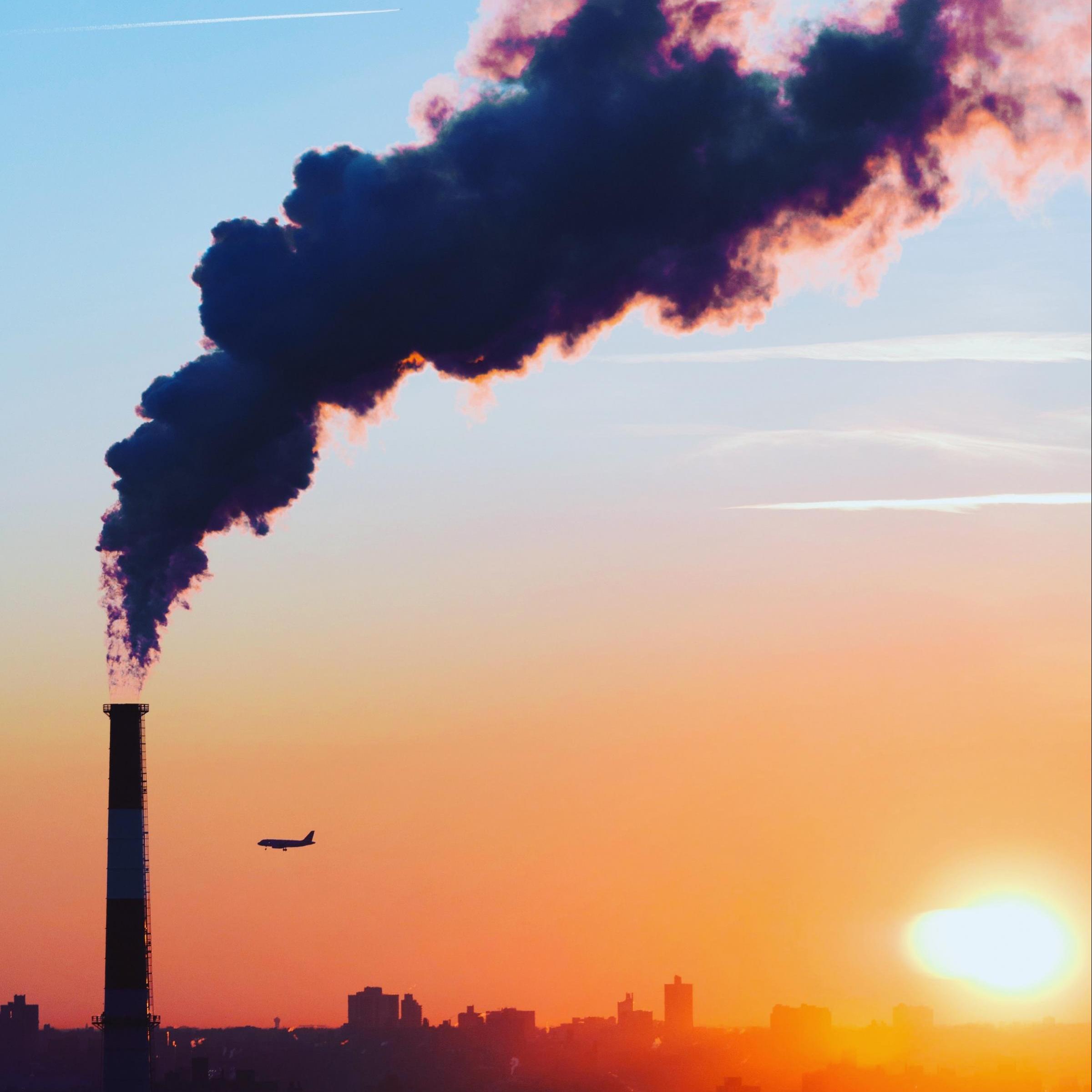
Within days of taking office, President Joe Biden reshaped the entire federal government into one massive arsenal in the service of climate action, with a sharp focus on environmental justice. That means some heavy lifting is ahead for the U.S. Department of Energy.
The agency’s mission has historically emphasized fossil fuels but in recent years it has been focusing more attention on renewables. In that regard, its cutting-edge research office ARPA-E could play a key role in the pursuit of a more just and equitable energy portfolio for the nation.
ARPA-E, renewables, environmental justice and national defense
In some ways, environmental justice is built into the DNA of renewable energy, with its promise of clean air, clean water, resiliency, affordability and employment.
However, the Department of Energy has not turned its attention to renewables as a moral or ethical matter. The main focus is on the Energy Department’s national security mission, which is rooted in the World War II Manhattan Project nuclear program. Nuclear energy research and stewardship of the nation’s nuclear stockpile continue to be important parts of the agency’s portfolio.
The Department of Defense connection also continues to manifest itself in the renewable energy field. One turning point occurred during the Obama administration, when the U.S. Air Force and other branches of the armed services began an intensive effort to deploy their procurement power in support of the Energy Department’s efforts to grow the market for clean technology. Those efforts continued during the Trump administration and culminated in the articulation of a carbon-negative goal last fall.
ARPA-E represents a pre-market level of connection between the departments of Energy and Defense. The acronym stands for Advanced Research Projects Agency - Energy, and it is modeled on a Department of Defense office called Defense Advanced Research Projects Agency (DARPA). Among other achievements, DARPA is credited with inventing the internet, GPS and Siri.
Similarly, ARPA-E was created to provide public funding for high risk, high reward R&D projects that could have a transformative impact on daily life through the lens of national security.
ARPA-E began operation in 2009, following its creation by Congress through the America COMPETES Act of 2007. The COMPETES Act was a response to clear warning signs that America’s position as a global innovation leader was dissolving, raising fundamental national security issues.
Congress left room for ARPA-E to support improvements in fossil energy technology. However, the main focus is on renewables as well as nuclear energy. Congress tasked ARPA-E with decreasing dependence on foreign energy, reducing greenhouse gas emissions, improving energy efficiency and regaining a leadership position in energy innovation.
Planning today for the sustainable energy landscape of tomorrow
At this point it is too early to assess how ARPA-E will assimilate the Biden administration’s environmental justice mission. In addition, due to ARPA-E’s focus on early stage research, its activities during the Biden administration may not take shape in the market for years to come. Indeed, six years after ARPA-E first opened its doors the National Academy of Sciences took stock of the office and noted that “six years is not long enough to produce observable evidence of widespread deployment of funded technologies.”
Still, NAS also noted “there are clear indications that ARPA-E is making progress toward its statutory mission and goals.”
ARPA-E assessed its progress since last fall and the numbers do indicate the potential for global impact. The office reported that 88 new companies have since launched; 237 started to partner with another U.S. government agency; and 177 teams together have raised almost $5 billion in private sector funding to help advance various technologies closer to market. The office also credits ARPA-E funding with supporting thousands of peer-reviewed research articles and more than 700 U.S. patents.
One indication of ARPA-E’s potential for impact is the green hydrogen market, which seems to have exploded out of nowhere over the past year. In fact, just a few years ago green hydrogen was practically nonexistent on a commercial scale. However, by 2016 ARPA-E was already pumping millions into green hydrogen and green ammonia R&D, helping to kickstart the hydrogen economy and accelerate global decarbonization.
Putting the emphasis on environmental justice
The green hydrogen trend also illustrates how the clean energy transition can create negative impacts unless environmental justice is integrated into the planning process. For example, green hydrogen involves industrial processes, storage, safety, and transportation issues that must be resolved in order to realize community benefits and prevent harm.
In that context, it will be interesting to see how a newly announced round of $100 million in funding for ARPA-E projects will reflect President Biden’s more aggressive approach toward justice and climate action.
The new round of funding comes under the ARPA-E “OPEN” program, which seeks cutting-edge projects in areas that fall outside of targeted research streams.
Historically the OPEN series has provided room for fossil energy projects. However, in announcing the new round of funding the Energy Department’s Chief of Staff, Tariq Shah, hinted that justice and green jobs would factor into the final selection.
“The Department of Energy is committed to empowering innovators to develop bold solutions that will help America achieve net-zero emissions by 2050 while creating millions of good-paying jobs that benefit all Americans,” Shah said, emphasizing that the Department is seeking innovators to “tackle the climate crisis and build a more equitable clean energy economy.”
An all-in approach to renewable energy and environmental justice
Renewable energy is a decarbonization tool that can provide local communities with foundational benefits including cleaner air, affordable power, good paying jobs, and improved energy security and resiliency.
However, the clean power transition does involve broader impacts including land use issues, extractive resources, and the impact of new manufacturing and industrial facilities on local communities. All of these must be taken into consideration by the Department of Energy and ARPA-E as the Biden administration embarks on its climate and environmental justice mission.
Image credit: Thijs Stoop/Unsplash
What is the Role of Business in Promoting COVID-19 Vaccines?
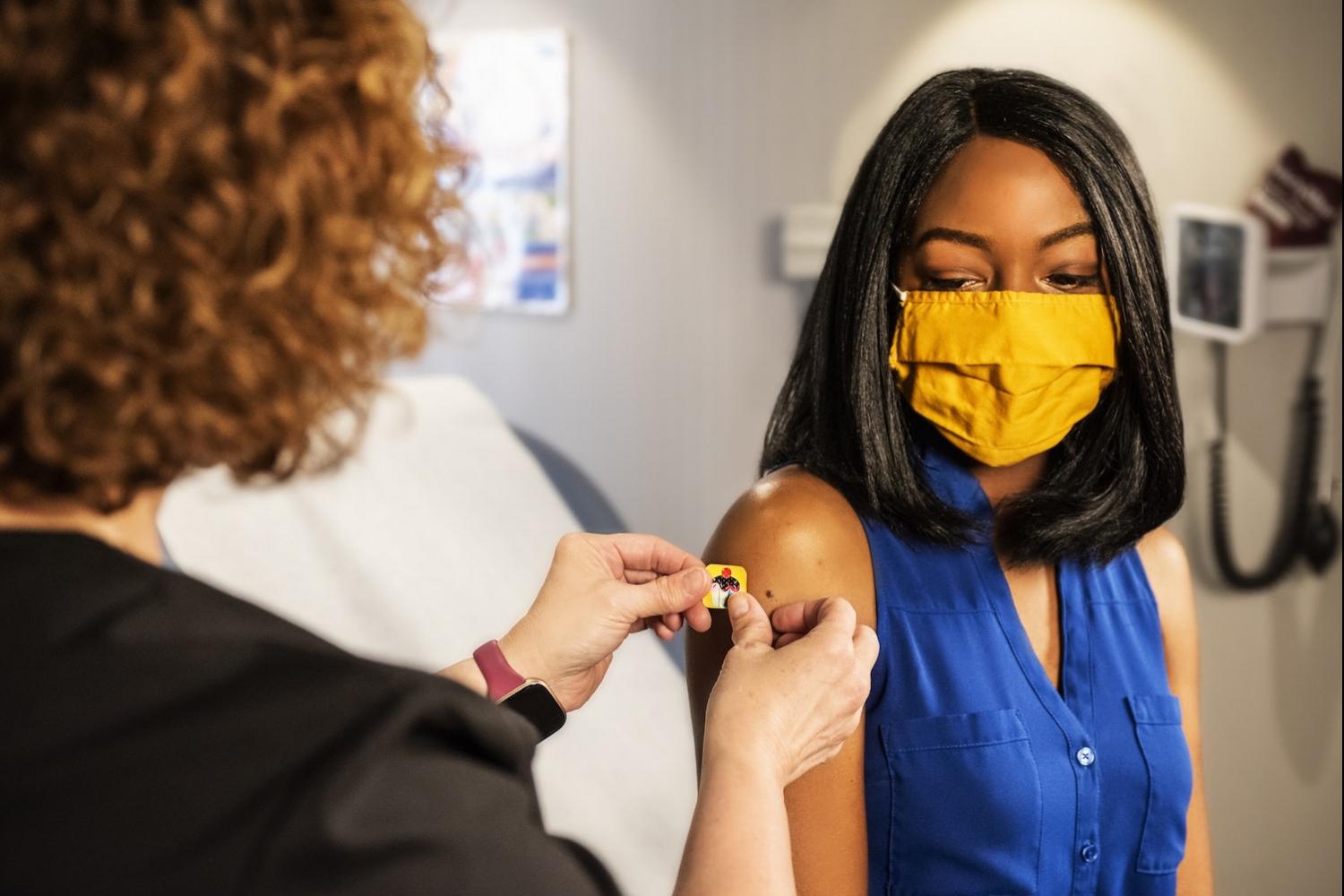
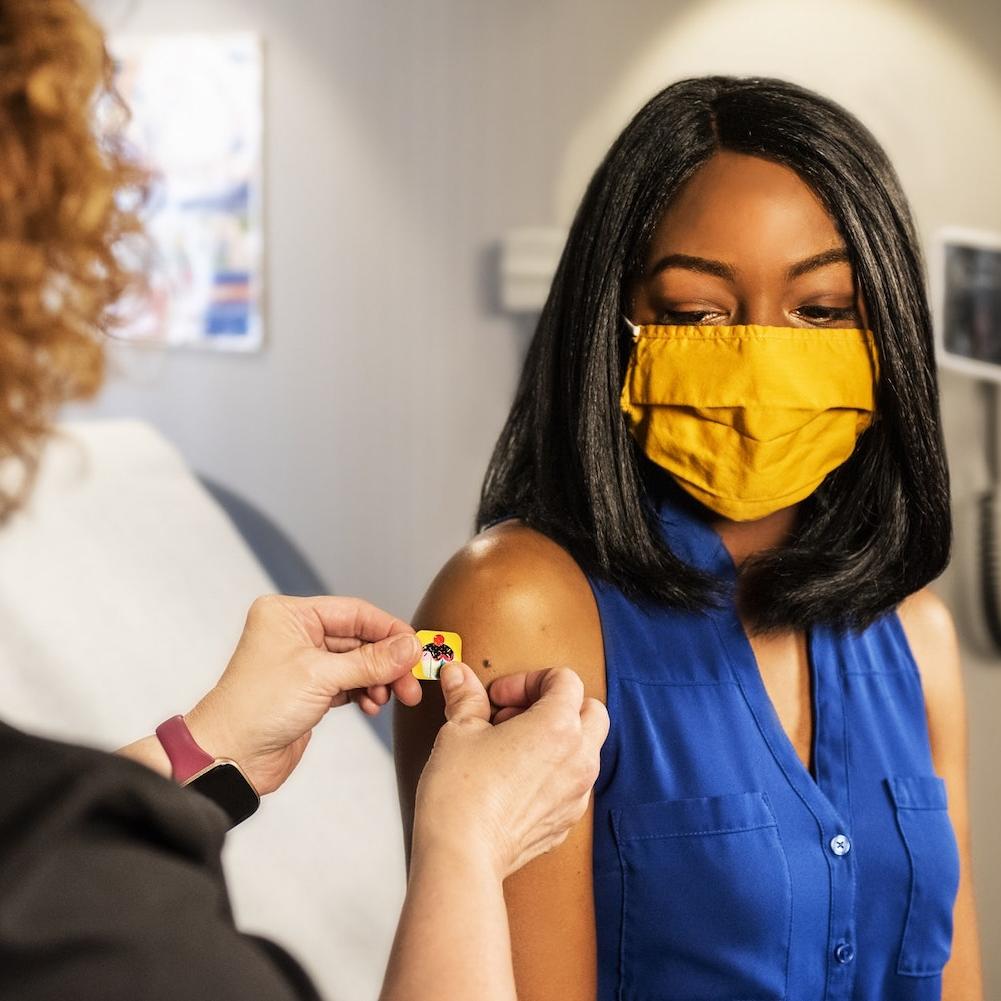
Several leading U.S. corporations have stepped up to help ensure COVID-19 vaccines get to the public as quickly as possible, while others have been slow to respond. But examples so far indicate that corporate action — or lack thereof — can make a significant difference, especially as it relates to issues of race and COVID-19 vaccine access.
Essential workers under the COVID-19 microscope
Wage and race inequality in the U.S. has long bubbled under the surface. The COVID-19 pandemic pushed it further into plain sight, as low-wage frontline workers in retail, food service, logistics, and other sectors have borne the brunt of the health and economic impacts.
That divide could have been alleviated to some degree by a firm federal policy on COVID-19 worker safety. However, the Donald Trump administration refused to take action, and Trump himself actively encouraged the public to ignore simple, effective precautions against spreading the virus.
Left to their own devices, some corporate leaders rose to the occasion by offering “hero pay” and establishing protections for frontline workers. But many others were slow to adopt COVID-19 safety policies and ensure the use of protective equipment.
Corporate intervention at work in COVID-19 prevention
In particular, the meatpacking industry became a symbol of national failure on public health and poverty issues early in the pandemic. The industry is unique in its concentration among a relatively small set of rural counties that are also historically impoverished. In of these 49 counties, meatpacking is estimated to account for more than 20 percent of all employment. “Even before the outbreak of COVID-19, the 49 rural meatpacking-dependent counties were facing a comparatively high prevalence of poverty,” the U.S. Department of Agriculture noted in a recent study of the issue.
Meat packers also typically work in close quarters, adding to the risk of infection. Using data compiled by Johns Hopkins, USDA noted a close association between meatpacking dependency and the spread of COVID-19 in the first weeks of the pandemic.
“Starting in mid-April, confirmed cases per 100,000 in rural meatpacking-dependent counties grew rapidly,” USDA wrote. By the end of April, the two-week moving average was 10 times higher for meatpacking counties than other rural counties.
As extreme as it was, the difference began to dissolve over the summer as the industry established more effective protocols. According to the USDA report, meatpacking counties fared about the same as other rural counties during the nationwide surge in infections this past fall.
Implications for vaccine distribution
The takeaway from the meatpacking sector's experience is that corporate intervention can make a difference, even under challenging circumstances where poverty and working conditions create public health obstacles.
A similar mindset could be applied to vaccine distribution, as public health experts raise concerns about equity in vaccine access. Getting time off work or transportation to a vaccine site are significant obstacles for many. Establishing trust is another challenge, especially as it relates to the fraught history of public health and race relations in the U.S.
Retailers and other industry leaders can help overcome these obstacles as they apply to their employees by establishing vaccine clinics at or near worksites. They can also leverage their communication networks to engage skeptical employees with fact-based information.
Walking the vaccination walk
In addition, corporate leaders can deploy their trusted brand names to help make vaccines available to the general public as soon as supplies become available.
That movement is already taking shape, as the Centers for Disease Control and Prevention (CDC) issued a long list of retail outlets authorized to provide the vaccine, including pharmacies, supermarkets, and superstores like Walmart, Kroger and Costco.
A Walmart blog post on Jan. 22 states a goal of 10 million to 13 million doses per month and signals how other retailers can ensure that underserved communities get their fair share.
“Walmart and Sam’s Club operate more than 5,000 pharmacies in the U.S. and Puerto Rico, many of which serve underserved communities and the heart of rural America,” the company wrote, noting that this footprint pre-positions it to help in rural “healthcare deserts” and other areas where pharmacies provide the only accessible healthcare contact.
Walmart also plans to leverage its extensive community network to expand its vaccination footprint beyond its own stores. Churches, stadiums and youth centers are among the sites under consideration.
Other ways for companies to help
Walmart and other partners on the CDC list already have the resources at hand to gear up on-site vaccination facilities quickly. While other leading retailers may lack those resources, they can still make a difference.
One strategy is to form new partnerships. Amazon, for example, joined with Virginia Mason Medical Center to establish a public vaccination site in Seattle. The effort took just four days to pull together. Amazon has also pledged to provide the Joe Biden administration with logistical and technical support for vaccine distribution nationwide.
Another strategy is to incentivize employees to use vaccine sites. That strategy seems to be rapidly expanding. Last weekend, Vox took stock of the situation and noted that McDonald’s, Trader Joe’s, Starbucks, Lidl, Kroger, and Target are among those providing paid leave or cash bonuses for their employees to get vaccines, with Target additionally providing round-trip Lyft ride credits to a vaccination site.
The offset strategy is even more meaningful for retailers that have a large footprint in underserved communities. In that regard, there is still much room for improvement. For example, Dollar General has pledged to provide four hours of paid leave to any employee who wants to be vaccinated, but as of this writing Dollar Tree and Family Dollar have yet to announce a similar policy.
As noted by Vox, there is at least one critical gap in the corporate response. Although McDonald’s makes the list of corporations providing paid leave for vaccinations, the policy only applies to its own employees, not to its franchisee workers.
The gig economy is another area in which corporate leaders need to step up their game in order to break down vaccination barriers for low-wage workers. Instacart, for example, has pledged to provide a vaccine stipend for several categories of gig workers, which should at least partially offset time that would otherwise be spent working. Every other gig company should follow suit.
Putting the disinformation genie back into the the bottle
Some companies may be hesitant to promote vaccination more vigorously, out of concern of stirring up a hornet’s nest among employees or members of the public who have been sucked into the vaccine disinformation vortex. However, as more companies normalize vaccination and establish trust, the anti-vaccination movement may lose its persuasive force.
Social media companies can make a significant difference in this area. In particular, much attention has focused on Facebook’s role in spreading vaccine disinformation prior to the COVID-19 pandemic. In recent years, the company had taken some steps to counterbalance disinformation on vaccines, but the pandemic exposed yawning gaps in the strategy, underscoring the urgent need for much stronger action.
Last week Facebook finally seems to have acknowledged the extent of the damage, if only in a roundabout way. Toward the end of a long, detailed statement on its efforts to help promote COVID-19 vaccination, the company briefly noted that it has adopted guidance from the World Health Organization and other experts on combating disinformation. Accordingly, Facebook stated that it has expanded its list of false claims targeted for action.
The new policy goes far beyond previous measures, which mainly involved posting disclaimers or steering traffic away from false claims. Instead, the policy now stipulates the outright removal of pages, groups, and accounts on both Facebook and Instagram that spread disinformation.
The new policy may not completely undo the disinformation circulated on Facebook and other sites, but as more corporate leaders consider taking steps to promote COVID-19 vaccination, perhaps social media will prove to be less of an enemy, and more of an ally.
Image credit: CDC and Hakan Nural via Unsplash
Researchers Note Falling Air Pollution in Northern Africa, Even As Economies Grow
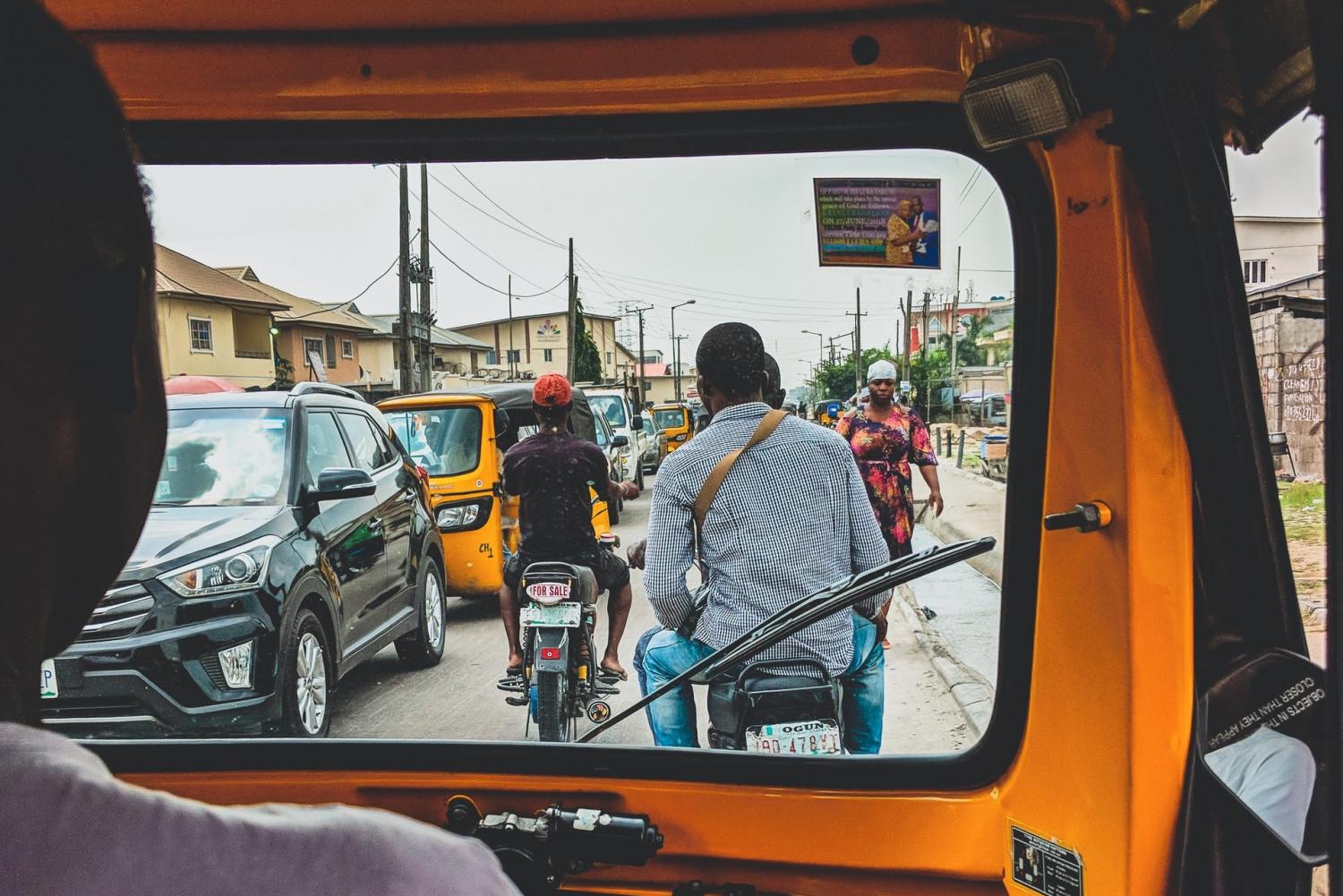
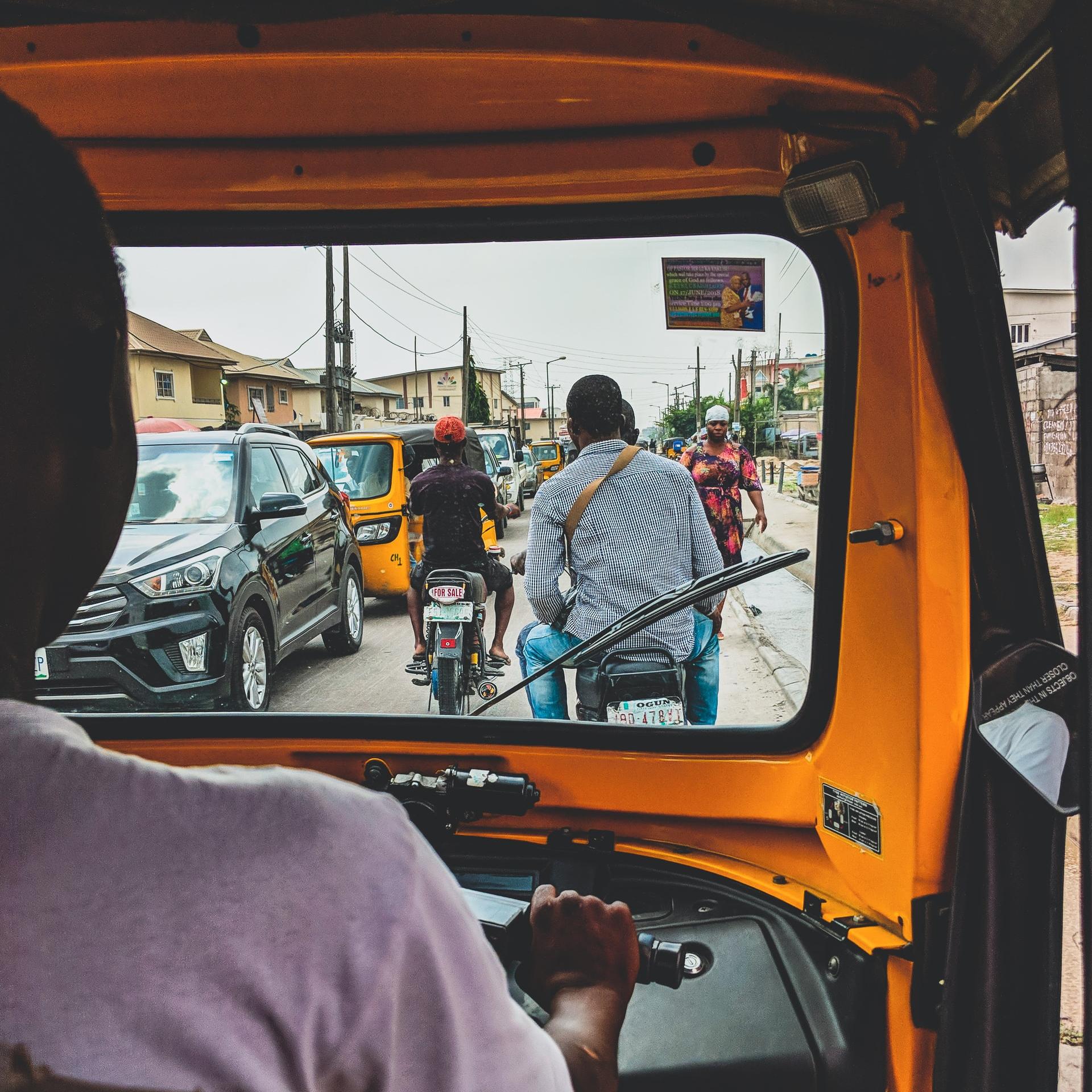
Image: Although urban transit is growing in cities like Lagos, Nigeria, pictured here, research indicates air pollution levels in booming northern Africa may not be what you'd expect.
Air quality is improving in north equatorial Africa, even as the region urbanizes and increases its dependence on fossil fuels, a new study published in Proceedings of the National Academy of Sciences has found.
“The traditional paradigm is that as middle and low-income countries grow you often see more emissions, and to see a different kind of trajectory is very interesting,” Jonathan Hickman, a researcher at the NASA Goddard Institute for Space Studies and lead author on the study, told The New York Times. “It’s nice to see a decline occurring when you’d expect to see pollution increasing.”
So if fossil fuel use is up, what's driving the downward trajectory in air pollution? Like in many other parts of the world, farmers in north equatorial Africa — one of the continent's fastest growing regions that includes Nigeria, Kenya and Uganda — often set fires to clear land between planting seasons. As economies grew in recent years, the number of fires set by farmers declined, offsetting upticks in air pollution from other sources like transportation, the research found.
As agricultural vegetation fires decreased, so did nitrogen dioxide emissions, which can form acid rain and harm human health. Through satellite observations, the researchers noted a 4.5 percent decline in nitrogen dioxide concentrations during the northern region’s fire season between 2005 and 2017. This lower fire-related pollution correlated to rising mean GDP density in the region.
A net improvement to air quality is a promising discovery when the African population is expected to double by 2050 and fossil fuels are projected to continue to fuel two-thirds of the continent’s electricity needs beyond 2030.
The study authors note that the observed improvement to air quality is only present during the dry season of November through February and may be lost as nations increase their reliance on fossil fuels. Africa’s share of 4 percent of global carbon emissions may very well grow if economies do not continue to adjust to cleaner methods of industrial activity and energy production.
The need for continued pollution reduction in Africa
Despite Africa’s minimal contribution to global greenhouse gases, the continent faces severe consequences if global emissions continue to grow. Up to 48 percent of Africa's GDP could be vulnerable to extreme climate patterns by 2023, global risk analytics firm Verisk Maplecroft projects.
The continent hasn’t yet tapped into the breadth of its renewable energy potential. With US$70 billion in annual investment, the International Renewable Energy Agency (IRENA) estimates that clean renewable and indigenous sources could meet just about a quarter of African energy needs by 2030. In the process of this energy transition, global gross domestic product would increase by 1.1 percent.
As a whole, Africa’s current state of energy investment still favors non-renewable sources — almost 70 percent of energy investments in 2018 went to fossil fuels — but some countries are making headway toward a renewable future. Morocco, for example, has built the largest concentrated solar facility in the world as part of a push to achieve a 52 percent renewable energy mix by 2030.
Not only can renewable energy guide the continent toward meeting the goals of the Paris climate agreement, but it can also bring energy equity to remote reaches. For example, today around 600 million people in sub-Saharan Africa live without electricity. As the region builds energy infrastructure, it has an opportunity to build clean at the outset. The National Geographic outlines the abundant natural resources available in the region: In addition to plentiful sun all around, South Africa has prime land for wind farms, and Zimbabwe overflows with water that can be used for hydropower.
Africa faces the most extreme predicted consequences of climate change. Even though the continent — bigger than China, India, the contiguous United States and most of Europe combined — only contributes a handful of percentage points to global greenhouse gas pollution, it has a significant part to play in achieving global climate goals. Economic empowerment may have a part to play in that process — renewables will likely claim an even larger role.
Image credit: Joshua Oluwagbemiga/Unsplash
The True Cost of Nutrition Neglect — And How Regenerative Agriculture Can Tip the Scale


This year, the Department of Agriculture (USDA) budget is estimated at $146 billion. Conversely, the Department of Health and Human Services budget for 2021 is roughly $1.37 trillion. While there are complex factors that play a role in the appropriation of these funds, the message it sends couldn’t be easier to understand. The U.S. is fighting an expensive healthcare battle reactively, instead of proactively.
What people eat has a direct impact on their health. Today, and for the last several decades, the United States has chosen to spend significantly on treating health conditions, instead of allocating to try and prevent them. To shift the balance in the future, we need to fund a farming revolution and address the problem that’s coming to a head: the true cost of nutrition neglect.
It starts by looking at the way we grow food.
Today’s industrial farming practices have made it difficult to find nourishment. Industrial farming practices have taken a toll on the crops we’re growing, starting with the soil — which could carry grave implications for health and development across the country. “Poor soils can impede a nation’s progress to improve incomes and nutrition by increasing the likelihood of crop and livestock failures,” reads a 2016 report commissioned by the Barack Obama administration.
The report goes on to suggest, in detail, the need for regenerative farming practices, but its recommendations were ultimately tabled. Kickstarting regenerative agricultural practices requires both patience and funding. A growing group of regenerative farming advocates believe funding for sustainable USDA initiatives today will lead to a reduction in the need for HHS spending in the future. That is, if the USDA pushes for a shift back to heritage farming practices.
Reestablishing the soil microbiome with regenerative agriculture
Industrialized farming has given way to monocropping, as well as broad use of pesticides, herbicides and fungicides. This, coupled with tilling practices, is causing significant soil depletion. As a result, we’re seeing less crop diversity in farm fields and crops that are more prone to blight, with yields lacking vitamin content consistent with a healthy soil microbiome.
Enacted as part of conservative farming practices to end the Dust Bowl, these techniques have remained since the 1930s as a stopgap measure. But that stopgap has dictated the evolution of industrial farming, and put us back on a path to repeat similar hardship. We need to exchange conservative farming practices for sustainable ones, going back to the principles of heritage farming.
These principles are well-established. Cover cropping to protect planting beds. Mulching with decomposing organic matter. Diverse crop rotations to restore the nutrient profile of soil. These practices date back centuries and are the keys to more sustainable soil.
The economic impacts of nutrition neglect
The trajectory of U.S. farming isn’t on a sustainable track. As much as $30 billion of the appropriated funds for the USDA take the form of farm subsidies, and that number will only grow higher as farmers struggle to maintain and grow crop yields in depleted soil conditions. Embracing and funding regenerative practices today could tamp down on the need for subsidies in the future.
There’s also trade to consider. Agriculture is the United States’ largest export, accounting for $135 billion in 2020. To continue satisfying demand for these exports — and to protect against the growing trade deficit — pressure is on farmers to continue producing at a high level in years to come. The problem is, coupled with climate change, soil depletion is making it harder for farmers to sustain operations.
There’s inherent cost in soil depletion, as well. According to a USDA report on natural resource conservation published a decade ago (2010), “It is estimated that the total annual cost of erosion from agriculture in the USA is about US$44 billion per year.” It’s a number that’s growing, and will continue to devastate U.S. agriculture until there’s fundamental change to industrial farming.
The true cost of nutrition neglect
All this goes without talking about the untold cost current agriculture practices have on our healthcare industry. It’s virtually impossible to estimate these figures, outside of broad generalities.
Poor diets incur healthcare costs as high as $50 billion each year. Obesity and the chronic conditions that come with it tack on another $147 billion annually, according to the U.S. Centers for Disease Control and Prevention (CDC). Countless conditions linked to nutritional neglect only serve to add billions to the total. Each year, the United States spends more money on medical care for illnesses related to dietary deficiencies than on the entirety of agricultural appropriations.
Agriculture needs better funding and better practices to help build a sustainable future — one in which the cost of feeding people outstrips the medical care they need, and both are orders of magnitude lower than where they’ll end up if we continue on this path.
Image credit: Daiga Ellaby/Unsplash
Lead With Love: How Companies and Brands Can Help Build a Better World


Editor's note: This article series on brands as a force for good is sponsored by Procter & Gamble and produced by the TriplePundit editorial team.
The events of the last 12 months have brought clarity to what matters. The role of business in society has been forever disrupted. It is now inescapably clear that brands and companies have a responsibility to society to step up as both a force for good and a force for growth. At P&G, we call this “leading with love” — an opportunity to do more and do better for our communities and the world around us — on Valentine’s Day and every day.
The choice of being both a force for good and a force for growth is important. Being a force for good without growth is philanthropy; there’s nothing wrong with philanthropy, but businesses and brands are accountable to shareholders. Being a force for growth without doing good for society overlooks our responsibility to a broader set of stakeholders, including consumers and employees. Doing good needs to lead to driving growth, which in turn enables doing more good.
Being useful during COVID-19
This virtuous cycle of good and growth is not something new at P&G. For generations, we’ve supported consumers, communities, and our own employees through unexpected challenges, all while providing the products people count on to take care of their personal health and hygiene, care for their families, and create healthy homes.
When COVID struck, P&G heroes were among the frontline manufacturing and distribution workers who were working around the clock to supply needed products as people rushed to stock up during the lockdown.
With our brands, we viewed every communication through the lens of being “useful”… creating “how-to” content on sanitizing surfaces, shaving for a better mask fit, and skin care after wearing a mask all day. We offered free laundry services for frontline responders and their families and virtual childbirth classes for new parents. We used our voice to create public service messages for social distancing and mask wearing. We expanded existing disaster relief operations to donate tens of millions worth of products, cash and personal protective equipment through more than 200 relief organizations worldwide. The focus has been on how to help, because being a force for good is about being useful.
Addressing systemic inequalities
Another way to be useful is supporting programs that help raise money and awareness to fight COVID-19. Crises like COVID reveal the cracks in society and those of us in business cannot let those inequalities widen. When we address systemic inequalities, communities are healthier, economies grow, and the world is a better place — for everyone
That’s why at P&G we use our voice to highlight bias and promote equality.
One example is gender equality. Seventy-five percent of workers on the front line are women, who experience the majority of job losses, and who bear the disproportionate burden of work in the home. So, instead of setting gender equality aside during the pandemic, we offered a call-to-action to Choose Equal for an equal future.
We also stepped up for other hard-hit communities, such as the 80 percent of U.S. Hispanic adults who have jobs outside of their homes, often without adequate healthcare or other support services. We created a film called Estamos Unidos for fundraising events benefiting the Hispanic community.
Black Americans are up to 340 percent more likely to die from COVID-19. We created the film Circumstances to shine the light on the inequalities that disproportionately affect the Black community and raise money for much needed assistance and emergency support.
These films and several more we released in 2020 were intended to help people learn about and engage in conversations about the realities of inequality. Because conversation leads to understanding. Understanding leads to empathy. And empathy leads to action.

Joining forces for acts of good in 2021
As we’ve turned the page to 2021, action is needed more than ever. That’s why P&G has committed to 2,021 acts of good for the year 2021. We’re mobilizing the power and reach of our trusted brands — and we’re inviting consumers to join us.
These acts of good represent the next chapter of P&G’s Lead with Love consumer campaign, which includes a call-to-action to make 2021 the year we all come together to support our communities, accelerate equality, and protect our planet. We’re bringing this to life through a new film, Emotions, which highlights the eight emotions humans are born with and why love is the most powerful of all.
The events of 2020 have made it clear that brands and companies have a responsibility to society — and that we can do even more, shaped by the love and compassion we have for each other. This Valentine’s Day is a perfect time to reflect on how we can lead with love — as individuals, brands and companies. Even the smallest acts of good can make the world a better place.
Images courtesy of Procter & Gamble
The Top 6 Barriers to Better ESG Data (and What To Do About Them)
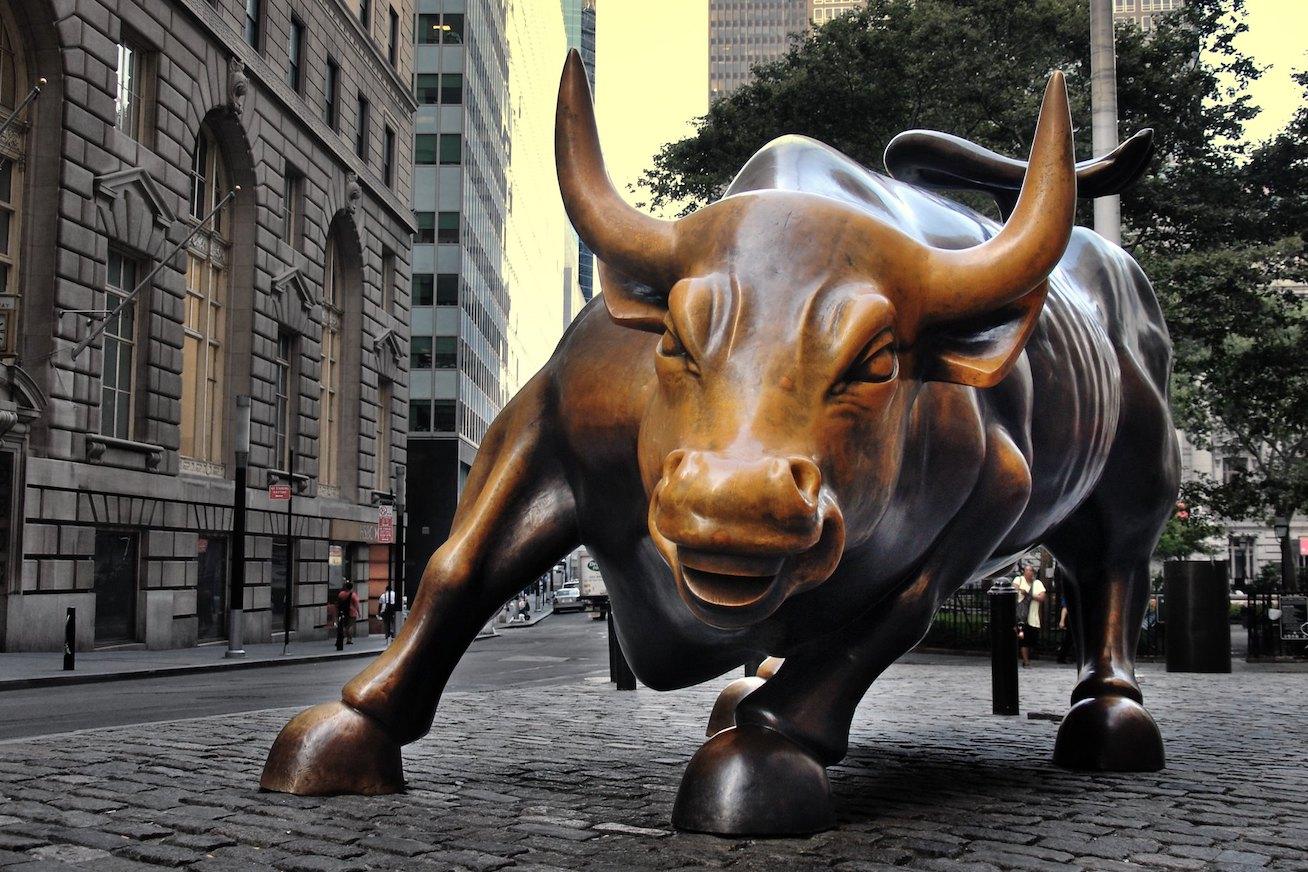
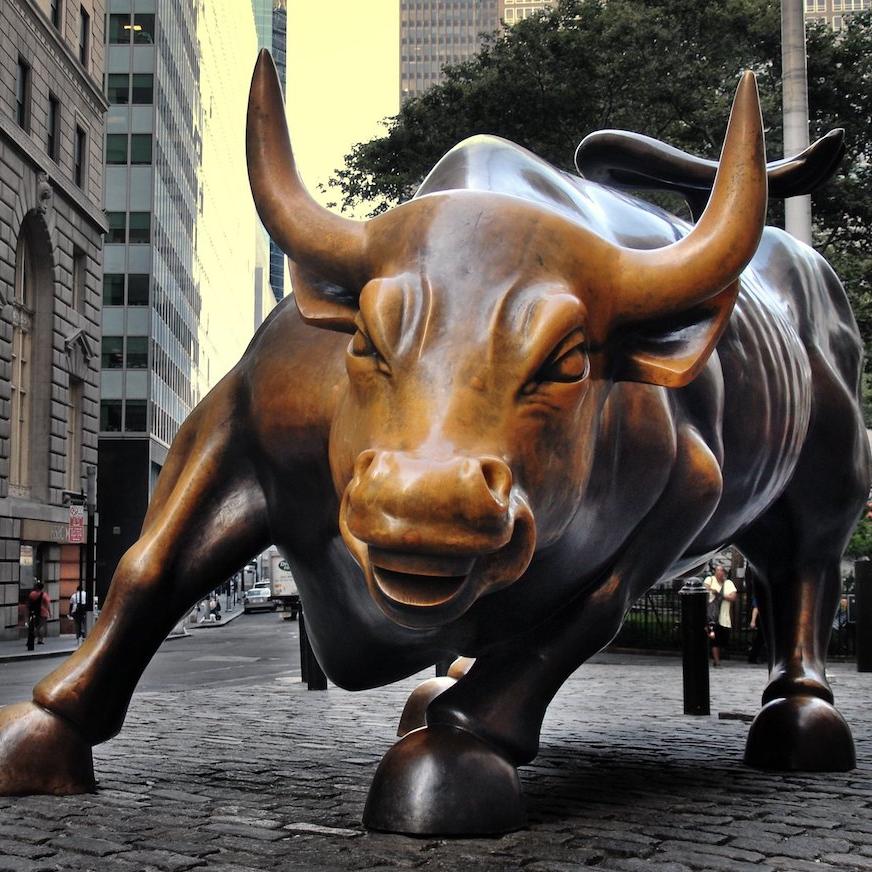
It’s becoming an all too familiar refrain: Investors need better data on companies' environmental, social and governance (ESG) performance. And that refrain is typically followed by the litany of problems that exist with the current sources of ESG data.
A recent Wall Street Journal article — "Providing Timely ESG Information Is Becoming More Crucial for CFOs” — makes the case for “frequent data updates from companies to inform real-time investment decisions.” While this is an absolute necessity, "good” ESG data is nonexistent in the market.
As a 30+ year veteran of the sustainability space, my take is that this data crisis has been building for decades and will come to a head in 2021. In a market that had developed normally, there would be several competing solutions before we had reached this point, but there are several intrinsic barriers that have prevented the assimilation of better ESG data, and which are important to recognize now so we don’t compound the problem going forward.
Sustainability is not just an investment
It’s important to start at the beginning. Sustainability is a global movement aimed at maintaining and improving life on this planet. Only recently have some of these issues crossed over into the realm of mainstream investors. Twenty-five years ago, I worked on my first report — Intel’s 1995 ‘environmental report.’ Since then, voluntary reporting of ESG information has become a fixture of large companies, with more than 90 percent of the S&P 500 now issuing sustainability reports. However, this ubiquitous annual ritual is far more oriented toward the marketing department than investor relations. Typically, companies collect the relevant data only once per year, often on spreadsheets, to update their corporate responsibility story. This information is not adequate for investment-grade decisions, nor is it all that helpful for developing corporate strategy.
Immaturity of accounting
Unlike financial disclosures, the accounting rules for many ESG topics are immature. I recall my days at Apple when our team was seeking international standards to measure and manage supply chain labor issues, but finding little. This is still the case for many ESG concerns, with one notable exception: carbon. The Greenhouse Gas Protocol provides well established and internationally accepted methods for measuring GHG emissions. But, in case you thought this was easy, the GHG Protocol runs in excess of 750 pages, and there is still a lot of confusion with indirect (Scope 3) emissions.
Inconsistent standards and lack of assurance
There have been many calls for the convergence of reporting standards as a threshold step toward better ESG data. Progress is being made toward merging the existing standards at the same time that the International Financial Reporting Standards Foundation (IFRS) is developing its own ESG standards, starting with climate. If this were not confusing enough, the assurance standards for ESG disclosures are also still developing. Thankfully, there is a solid standard from the American Institute of CPAs and an emerging international standard from the International Auditing and Assurance Standards Board. With all of these moving parts, it’s not surprising that less than 30 percent of ESG disclosures are assured.
Lack of regulation – for now
While most ESG disclosures are still voluntary, regulations are on the rise. The Europeans (as usual) are leading the way with the nonfinancial reporting directive (NFRD), which originally came into force in 2014. The EU is now revising the NFRD because of concerns regarding the consistency and quality of the reporting. It’s likely there will be new legislative and regulatory moves in the U.S. as well. In 2019, I testified on the ESG reporting bills going through the House Finance Committee at that time. More recently, the Securities and Exchange Commission (SEC) has signaled its interest in this area by appointing Satyam Khanna as senior policy advisor for climate and ESG, a newly created role. And the incoming chair of the SEC, Allison Herren Lee, stated: “I have focused on climate and sustainability, and those issues will continue to be a priority for me.” The forecast is a 100 percent chance of more ESG regulation, with climate being on top of the list.
Lack of comparability
Lacking consistent standards and assurance backed by regulations, it’s not a surprise that ESG disclosures are hard to compare. Many have complained about the lack of comparability in ESG analytics. But there is more to the story than just poor standards and assurance. Unlike financial reporting — which is about one thing: money — ESG is a very broad collection of topics that are often impossible to compare. For example, it’s magical thinking to assume that good carbon performance can offset poor diversity results — the two issues are just not fungible nor comparable. Yet, that is just what many ESG analysts do: compare the incomparable to produce the incomprehensible.
Enter the World Economic Forum: Through its International Business Council, the WEF has proposed a set of 22 core metrics drawn from existing standards that it recommends all companies, regardless of sector, should report. Whether you agree with all 22 metrics or not, if all companies report on the same ESG issues, investors could more easily compare the results. (Notably, WEF also recommended “expanded metrics” to help companies communicate more thoroughly). Adopting this method will improve quality and consistency, but again, good analytics must compare companies only on comparable metrics.
Lack of technology
These barriers have stunted the development of robust technology for gathering, managing, auditing, forecasting and reporting sustainability information. However, with mounting pressure from investors, the mandates from regulators, and converging standards, better solutions are rapidly emerging on the market. Given the urgency of the climate crisis and the relative maturity of its accounting standards, enterprise reporting solutions will be built for this issue first. But other issues, such as diversity, will soon follow.
The bottom line: A tipping point is near on ESG data
"What gets measured gets done" is the old axe ascribed to management guru Peter Drucker — and it’s never been more apt than with ESG data. The barriers outlined above have hindered companies from managing ESG issues, as well as investors in making portfolio decisions aligned with ESG performance.
But 2021 signals a tipping point where the barriers to better ESG data will be overcome. With regulators on both sides of the Atlantic and in China driving reporting mandates, unprecedented levels of money flowing into ESG assets, and pressure from mainstream investors, this market will rapidly mature. And not a moment too soon.
Image credit: Sam Valadi/Flickr